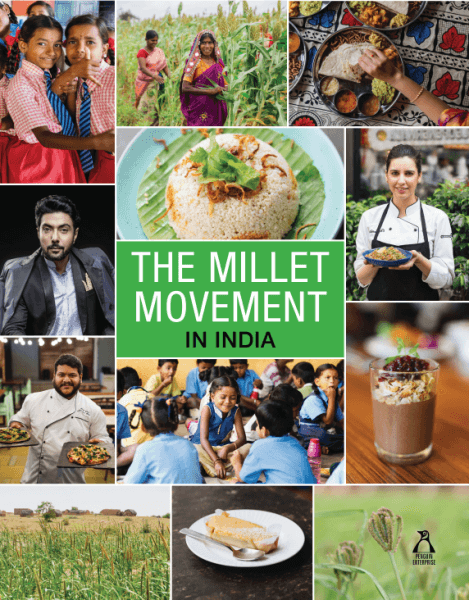
Coffee table book captures India’s incredible millet journey

‘The Millet Movement in India’, a coffee table book, has hit the stores. The book brings to fore the chefs who are giving millets the traditional to modern makeover, farmers who are keeping traditions alive, entrepreneurs who take millet foods to the consumer in umpteen ways every day and the traditions that underpin all.
Prime Minister Narendra Modi issued a statement on the release of the book, which has been published by Penguin Random House India. “I am confident the coffee table book will provide valuable insights into our cultural culinary landscape and help increase awareness about our ancient wisdom of food processing,” Modi said about the book.
The book also makes a clear case for consuming millets to overcome anaemia and promote healthy growth in children by presenting scientific evidence, from various studies, including from the first school feeding study with millets, undertaken by the International Crops Research Institute for the Semi-Arid Tropics (ICRISAT) and Akshaya Patra.
Also read: How prolonged rain in Karnataka is ruining your favourite brew
One of the authors and former Assistant Director General of ICRISAT, Ms. Joanna Kane-Potaka, said, “As 2023, the International Year of Millets, approaches, this book is a timely read for everyone from the consumer to the chef and from the farmer to the policymaker.”
The book shows a consumer numerous ways to tastefully cook millets with a recipe section from some of India’s top chefs like Ranveer Brar, Sanjeev Kapoor, Anahita Dhondy and Saransh Goila. The millet recipes range from traditional dishes like idlis, biryani and laddoos to modern dishes like burgers and waffles.
Prof. Ramesh Chand, a member of NITI Aayog, noted in the book, “Millets are indeed superior cereals in terms of nutrition and resilience and also in terms of sustainability. They are ideally suited to address child undernutrition and fit very well in nature-friendly production. Use of millets in various nutrition intervention programs and in Public Distribution System will be of great help to address malnutrition and improve health of low income households.”
“Millets are an opportunity right at our doorstep to create new exciting products and markets. If we want to tackle climate change, environmental degradation, malnutrition and farmers’ resilience, millets have to be part of the solution,” emphasized Dr. Jacqueline Hughes, Director General, ICRISAT.
The Millet Movement in India is available online.


